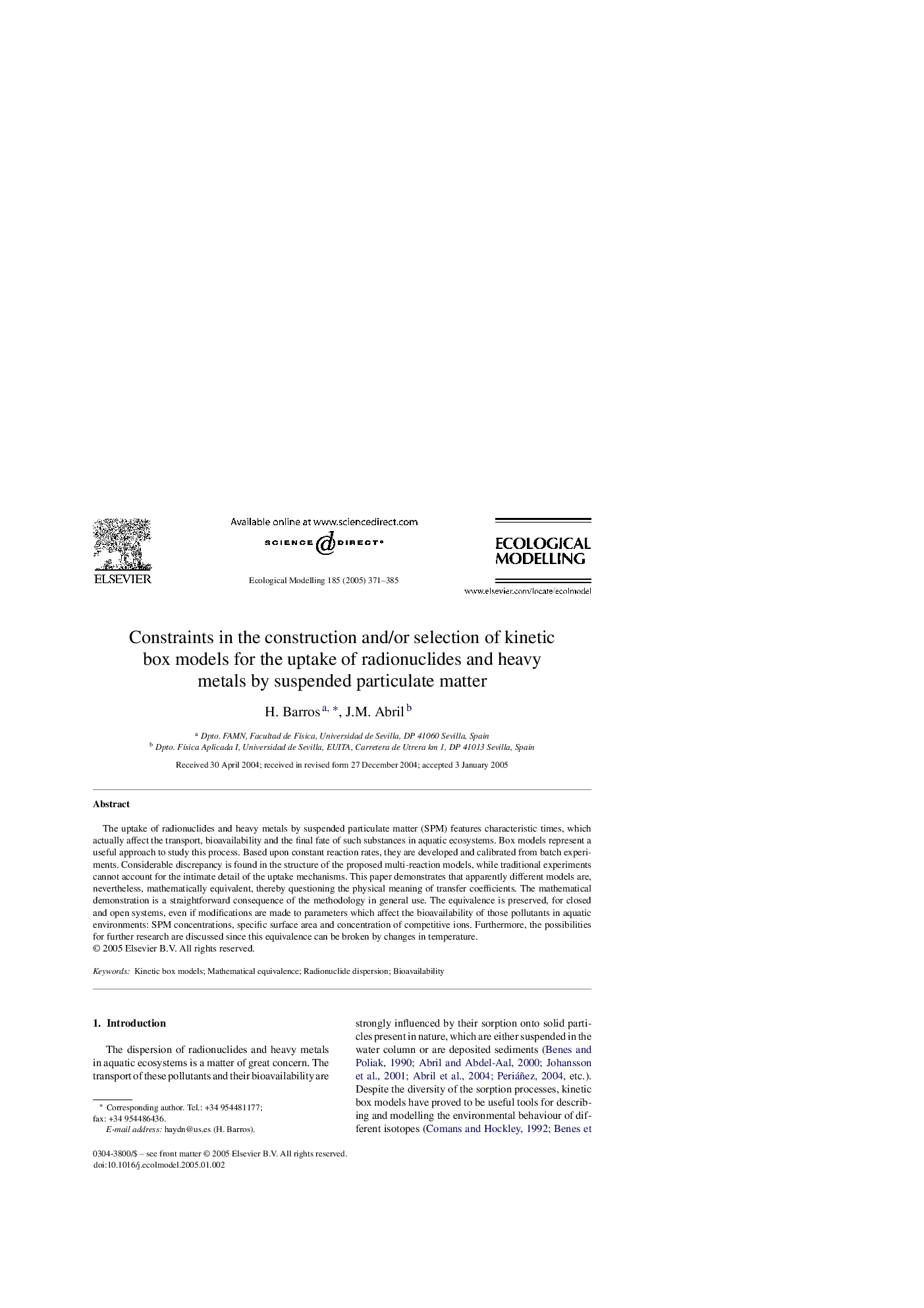| Article ID | Journal | Published Year | Pages | File Type |
|---|---|---|---|---|
| 9443395 | Ecological Modelling | 2005 | 15 Pages |
Abstract
The uptake of radionuclides and heavy metals by suspended particulate matter (SPM) features characteristic times, which actually affect the transport, bioavailability and the final fate of such substances in aquatic ecosystems. Box models represent a useful approach to study this process. Based upon constant reaction rates, they are developed and calibrated from batch experiments. Considerable discrepancy is found in the structure of the proposed multi-reaction models, while traditional experiments cannot account for the intimate detail of the uptake mechanisms. This paper demonstrates that apparently different models are, nevertheless, mathematically equivalent, thereby questioning the physical meaning of transfer coefficients. The mathematical demonstration is a straightforward consequence of the methodology in general use. The equivalence is preserved, for closed and open systems, even if modifications are made to parameters which affect the bioavailability of those pollutants in aquatic environments: SPM concentrations, specific surface area and concentration of competitive ions. Furthermore, the possibilities for further research are discussed since this equivalence can be broken by changes in temperature.
Related Topics
Life Sciences
Agricultural and Biological Sciences
Ecology, Evolution, Behavior and Systematics
Authors
H. Barros, J.M. Abril,
